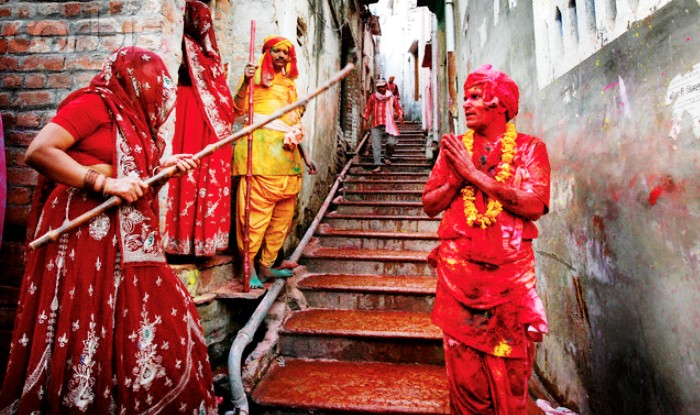Holi, the festival of colors, is a vibrant and joyous celebration deeply rooted in Indian culture and tradition. Every year, usually in March, people across the country come together to usher in spring with exuberant displays of color, music, and dance. However, what makes Holi truly fascinating is the diverse ways in which it is celebrated in different states of India. Let’s take a colorful journey through the kaleidoscope of Holi celebrations across the nation.
North India:

In states like Uttar Pradesh, Bihar, and Rajasthan, Holi is celebrated with unparalleled fervor and gusto. The festivities kick off with Holika Dahan, a ritual bonfire symbolizing the victory of good over evil. On the day of Holi, people gather in streets and open spaces, armed with colored powders and water balloons, ready to drench each other in hues of joy. Traditional folk songs and dances add to the festive atmosphere, creating an electrifying ambiance that is unmatched.
West India:

In Maharashtra, Gujarat, and parts of Madhya Pradesh, Holi takes on a unique form with the tradition of breaking the dahi handi (pot of curd). Inspired by the antics of Lord Krishna as a mischievous child, groups of young men form human pyramids to reach and break earthen pots filled with curd, hung at great heights. The revelry extends to vibrant street processions and community gatherings where people come together to smear each other with gulal (colored powder) and exchange sweets.
East India:

In West Bengal and Odisha, Holi is celebrated as Dol Jatra or Dol Purnima, commemorating the divine love of Radha and Krishna. Images of deities are placed on elaborately decorated swings (dol), and devotees take turns swinging them while singing devotional songs. The air is filled with the fragrance of flowers as people sprinkle colored water and powders on each other, reflecting the onset of spring and the blooming of nature.
South India:

Although Holi is not as widely celebrated in South India compared to other regions, states like Karnataka and Tamil Nadu have their unique customs. In Karnataka, the festival is known as Kamana Habba or Kama Dahanam, where a bonfire is lit to signify the burning of Kamadeva, the Hindu god of love. In Tamil Nadu, Holi coincides with the Tamil festival of Panguni Uthiram, a time for celebrating divine marriages, and is observed with rituals at temples and community gatherings.
Conclusion:
Holi is a festival that transcends geographical boundaries, uniting people from diverse backgrounds in a colorful tapestry of joy and camaraderie. Whether it’s the riotous revelry of North India, the cultural richness of the East, the traditional fervor of the West, or the subtle nuances of the South, Holi encapsulates the essence of India’s cultural heritage. As we immerse ourselves in the rainbow of colors and festivities, let us also embrace the spirit of unity and inclusivity that defines this beautiful festival. Happy Holi!


















